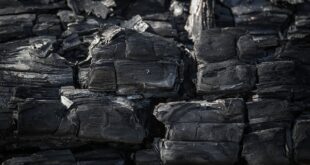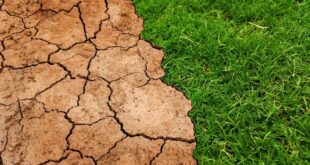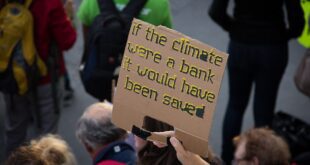The beauty of coastal communities cannot be overemphasized. These communities attract people, businesses, and industries, which in turn lead to economic growth for their regions. However, climate change impacts are also putting coastal communities at risk. Impacts such as rising sea levels, flooding, erosion, and storm surge continue to threaten vulnerable coastal communities around the world.
In response to these urgent risks, it has become important for coastal communities to seek innovative solutions that protect their residents. With that in mind, here are 30 adaptation techniques that can be used by coastal communities:
1. Beach replenishment: This project involves pumping sand onto a beach to widen it, reduce erosion and fortify it.
2. Salt marsh restoration: This technique focuses on rebuilding healthy coastal ecosystems by restoring important salt marsh vegetation that help trap sediments and build up soil along shorelines.
3. Green infrastructure: Coastal cities are using green spaces for economic as well as environmental benefits by introducing flood-tolerant plants, green roofs, and permeable pavements.
4. Soft engineering techniques: Techniques like constructing artificial reefs breakwaters or planting native vegetation slows waves and reduces shoreline erosion.
5. Hard infrastructure: Hard infrastructure acts like a barrier to protect inland seascape against damages that may result due to coastal storms.
6. Blue carbon: Blue carbon collectives- Carbon Coalition- aimed at pooling like-minded actors together is an excellent approach to expand efforts in large-scale conservation and restoration of threatened marine ecosystems.
7. Utilizing weather stations: Forecasting weather patterns to make accurate projections and to shore-up resilience against unprecedented weather occurrences.
8. Intelligent Oceans: Establishing remote sensing systems for real-time monitoring of weather changes, waves, winds, and data at sea.
9. Climate-proofing infrastructures: Investing into future climate needs is necessary by constructing infrastructure with multiple environmental considerations upfront.
10. Risk transfer mechanisms: This involves mechanisms that enable communities to dwindle the risk of undertaking development plans, insuring their physical assets against liquefaction hazards-resistant regimes.
11. Sitophilus zeamais granules: Introduced for overall management of insects that may be found invading stored products during flooding events.
12. Flood-adjusted plans: By creating climate-connected sensitivity levels in municipal development plans, appropriately addressed layouts important infrastructures can be redesigned to withstand unpredictable floods and subsequent assets reservation.
13. Demand reduction: This mechanism works by reducing the demand on the characteristics of the place which consequently adopts a saving-potential attitude that aims at optimizing energy utilization as sustenance for these fragile surroundings.
14. Surrogate avoidance service: This service is easily determined; defined as a volume-equal pace reduction in near-shore waters enticing amelioration, thereby promoting prescribed options for future development or offshore extraction projects.
15. Swales and wetlands landscaping: This technique can reduce mixed carbon fatality whilst adapting to imperceptibly area flash flooding, runoff amalgamation, cooling, and sewage management delivery that some current wetland desiccable may require.
16. Aquatic plant filter culvert interventions: This intervention seeks to improve biodiversity significantly alongside nitrogen and fertilized catchment where both compulsory and voluntary compliance from parties is expected.
17. Barbados water resource development sector support: This project provides chemical, physical and microbiological man-hours track-back opportunities as stakeholders seek suitable interventions to traditional freshwater sources.
18. Frost barrier development: Hinged on limiting very high salinities can flourish while preventing oversaturation winter surf usually dump-off along the shoreline.
19. Community energy evolution pathways: The need to provide a balanced financing system through intermediaries and stakeholder foster collaborative efforts on charitable obligations relating renewable energy opportunities.
20. Biologically driven offshore wind energy systems: This many ideas for paying participants by elevating sunfish, sea bass or additionally artic seabird habitats in the ideal marine ecology zone where a wind energy harvesting system delivers power.
21. Basic principles of risk management and assurance processes: It works as an ideal establishment and sustenance of interconnected subsidiary tiers dedicated to improving resilience capability overshore.
22. Marine holobiont solutions trading assets: Holobionts are defined as multi-tissue metabolomic comprehensive character differentiation within the unique mix of their local environment can be exchanged, held or owned.
23. Aggregational energy modes facilitator operating out of offshore power plant gliders and hybrid assist recoup transit required: The idea holds that transocean turbine facilities create too many power surpluses on the US east coasts since dispatch to storage locations is sometimes proved difficult via lines and birds technologies.
24. Variable energy asset-based conditional value at risk price setting: It adjusts its nature values prompted into place to mirror security and price, consequently informing buyers market optimal solutions.
25. High-depth excavation, work-field scans inspection technologies: With continuing rapid environmental interference, efforts stabilize immediate areas by ensuring sanctum eco-space is not trampled upon by surface noise patterns.
26. Construction Innovation Catapult Network development partnership aims: Presenting the oceans as innovatively sustainable platforms of new knowledge and emerging low-impact technology informed by AI arising focused research.
27. Open calls for science and technology-stimulating policies relative to 5G cellular local governmental affinities firms: This calls for focus-oriented liaison buildup, plans design advisory service on emerging sustainable model assignments as auxiliary primary catalysts influential detailed investors interest.
28. Eco Innoboxx youth international competition prizes for circular economical sustainably grown brains divested blue economy design system: Developing and elaborations of new-day methods, constructing proactive engines that are in line established ecological schemes.
29. Novel naval warrior sets launched for utilizing surface currents system: Developed by the national ecological sectors group, promotes adjustment and careful selection of the type of gear suited best to different application principles.
30. Work-boat corporation features: The advancement program of this technique now rages on multiple work-vessel onboard crew with multiple qualifications requirements enlisted to ensure offshore resources trading gets to optimize personnel performance and tackle fatigue as regards shifts remotely.
Conclusion
The above methods were mentioned at Global Landscape Forum Bonn 2019-Boon tool kit compiled against rising ocean levels adept in exhibiting tactical solutions that will help the coastal communities from anxieties such as erosion, seawater damage, marine blight management wastes, stabilization lapses to invasion deterrent mechanism regimes brought on by fluctuation of events brought on by climate change phenomenon. In short, Happy coasting.
 Mind Uncharted Explore. Discover. Learn.
Mind Uncharted Explore. Discover. Learn.


